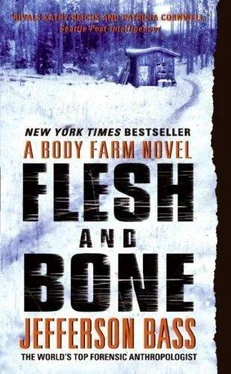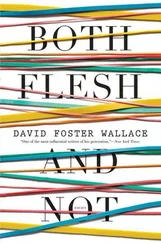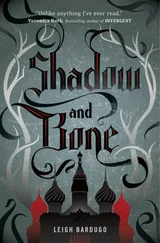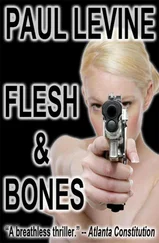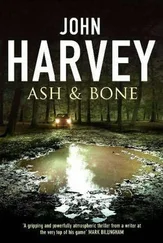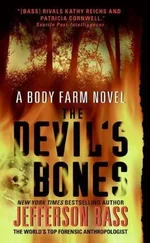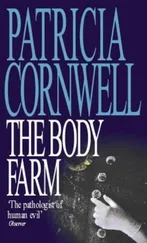Jefferson Bass - Flesh and Bone - A Body Farm Novel
Здесь есть возможность читать онлайн «Jefferson Bass - Flesh and Bone - A Body Farm Novel» весь текст электронной книги совершенно бесплатно (целиком полную версию без сокращений). В некоторых случаях можно слушать аудио, скачать через торрент в формате fb2 и присутствует краткое содержание. Год выпуска: 2007, Жанр: Детектив, на английском языке. Описание произведения, (предисловие) а так же отзывы посетителей доступны на портале библиотеки ЛибКат.
- Название:Flesh and Bone: A Body Farm Novel
- Автор:
- Жанр:
- Год:2007
- ISBN:нет данных
- Рейтинг книги:3 / 5. Голосов: 1
-
Избранное:Добавить в избранное
- Отзывы:
-
Ваша оценка:
- 60
- 1
- 2
- 3
- 4
- 5
Flesh and Bone: A Body Farm Novel: краткое содержание, описание и аннотация
Предлагаем к чтению аннотацию, описание, краткое содержание или предисловие (зависит от того, что написал сам автор книги «Flesh and Bone: A Body Farm Novel»). Если вы не нашли необходимую информацию о книге — напишите в комментариях, мы постараемся отыскать её.
Flesh and Bone: A Body Farm Novel — читать онлайн бесплатно полную книгу (весь текст) целиком
Ниже представлен текст книги, разбитый по страницам. Система сохранения места последней прочитанной страницы, позволяет с удобством читать онлайн бесплатно книгу «Flesh and Bone: A Body Farm Novel», без необходимости каждый раз заново искать на чём Вы остановились. Поставьте закладку, и сможете в любой момент перейти на страницу, на которой закончили чтение.
Интервал:
Закладка:

Jefferson Bass. Flesh and Bone: A Body Farm Novel
(Body Farm — 2)
IN MEMORY OF OFFICER BEN BOHANAN
1975–2004
PART ONE. BEFORE
CHAPTER 1
THE CHAIN-LINK GATE YOWLEDlike an angry tomcat in the watery light of dawn. Once my jaw unclenched, I made a mental note to bring grease for the hinges next time I came out to the Body Farm. Don’t forget, I chided myself, just as I had each of the past half dozen times I’d mentally made and mislaid that same damn note.
It wasn’t that my memory was failing, or so I liked to believe. It was just that every time I headed for the Anthropology Research Facility, as the University of Tennessee preferred to call the Body Farm, I had more interesting things on my mind than WD-40. Things like the experiment I was about to rig with the body in the pickup truck Miranda was backing toward the facility’s gate.
It never ceased to amaze me, and to frustrate me, that the Body Farm remained the world’s only research facility devoted to the systematic study of postmortem decomposition. As an imperfect human being, with failings and vanities, I did take a measure of pride in the uniqueness of my creation. As a forensic anthropologist, though-a “bone detective” who had branched out into seeking clues in decaying flesh as well-I looked forward to the day when our data on decomp rates in the moist, temperate climate of Tennessee could be compared with rates from similar research facilities in the low desert of Palm Springs, the high desert of Albuquerque, the rain forest of the Olympic Peninsula, or the alpine slopes of the Montana Rockies. But every time I thought a colleague in one of those ecosystems was on the verge of creating a counterpart to the Body Farm, the university in question would chicken out, and we would remain unique, isolated, and scientifically alone.
Over the past twenty-five years, my graduate students and I had staged hundreds of human bodies in various settings and scenarios to study their postmortem decay. Shallow graves, deep graves, watery graves, concrete-capped graves. Air-conditioned buildings, heated buildings, screened-in porches. Automobile trunks, backseats, travel trailers. Naked bodies, cotton-clad bodies, polyester-suited bodies, plastic-wrapped bodies. But I’d never thought to stage anything like the gruesome death scene Miranda and I were about to re-create for Jess Carter.
Jess-Dr. Jessamine Carter-was the medical examiner in Chattanooga. For the past six months she’d been the acting ME for Knoxville’s Regional Forensic Center as well. She’d been promoted, if that’s the right word, to this dual status by virtue of a spectacular screwup by our own ME, Dr. Garland Hamilton. During what no one but Hamilton himself would have described as an autopsy, he had so badly misdiagnosed a man’s cause of death-describing a superficial accidental cut as a “fatal stab wound”-that an innocent bystander ended up charged with murder. When his mistake came to light, Hamilton was promptly relieved of his duties; now, he was about to be relieved of his medical license, if the licensing review board did its job right. Meanwhile, until a qualified replacement could be appointed, Jess was filling in, making the hundred-mile trek up I-75 from Chattanooga to Knoxville anytime an unexplained or violent death occurred in our neck of the Tennessee woods.
The commute wasn’t as time-consuming for Jess as it would have been for me. Her Porsche Carrera-fire-engine red, fittingly enough-generally covered the hundred miles in fifty minutes or so. The first state trooper to pull her over had gotten a quick glimpse of her badge and a brisk talking-to about the urgency of her mission before she left him standing on the interstate’s shoulder. The second unfortunate officer, a week later, got a verbal vivisection, followed by scorching cellphone calls to the highway patrol’s district commander and state commissioner. She had not been stopped a third time.
Jess had phoned at six to say she’d be in Knoxville this morning, so unless she’d been called to a Chattanooga murder scene in the past half hour, the Carrera was streaking our way now, closing like a cruise missile. I hoped I could get the body in place by the time she hit Knoxville.
As Miranda eased the UT pickup toward the fence, the backup lights helped me fit the key into the padlock on the inner gate. The inner gate was part of an eight-foot wooden privacy fence, erected to deter marauding coyotes and squeamish humans-or voyeuristic ones. Originally we’d had only the chain-link fence, but after a couple of years, a few complaints, and a handful of thrill seekers, we topped the chain-link with barbed wire and lined the entire half-mile perimeter with the wooden barrier. It was still possible for nimble critters and determined people to climb in or see over, but it took some doing.
The padlock securing the wooden gate sprang open with a satisfying click. I unhooked one end of the chain from the shackle and began walking the gate inward. As the opening widened, the chain began snaking into the hole bored near the gate’s edge, like some metallic noodle being slurped up with clattering gusto. Sucked into the maw of death, I thought. Is that a mixed metaphor, or just a nasty image best kept to myself?
As I held the wooden gate open, Miranda threaded the narrow opening with ease, as if she made deliveries to death’s ser vice entrance on a daily basis. She practically did. For the past three years, thanks to a spate of television documentaries and the popularity of CSI -a show I’d watched only one incredulous time-we were swamped with donated bodies, and the waiting list (as I called the ranks of the living who had promised us their bodies eventually) now numbered nearly a thousand. We’d soon be running out of room; already, in fact, it was hard to take a step without stumbling over a body or stepping on a patch of greasy ground where a corpse had recently decomposed.
About half the bodies were simply brought out here to skeletonize. It was a little slower but a lot easier to let time, bacteria, and bugs-especially bugs-do the messy work of separating flesh and bone. Thanks to nature’s efficiency at reclaiming her dead, all that remained for us to do after a body’s residence at the Farm was to scrub off and deodorize the bones, take detailed measurements, plug those into our forensic database, and tuck the skeleton into our growing collection. The University of Tennessee now possessed the world’s largest assemblage of modern skeletons of known age, sex, and race. That was important not because it gave us bragging rights, but because it gave us a huge and continually evolving source of comparative measurements for forensic scientists to consult when confronted with the skeleton of an unknown murder victim.
The body in the back of the truck, though, was destined to contribute more than just his skeleton. He would shed crucial light on an unanswered forensic question. About fifty bodies a year were used in faculty or student research projects, usually exploring some variable affecting the rate of decomposition. One recent experiment, for instance, demonstrated that people who died shortly after undergoing chemotherapy decomposed far more slowly than what I’d since begun to think of as “organic” or “all natural” bodies. Chemotherapy, in other words, bore more than a passing resemblance to antemortem embalming, which was not a particularly comforting notion.
Once Miranda had cleared the opening, I closed the gate behind her and fed the chain back through its hole, leaving the padlock open so Jess could get in when she arrived.
Читать дальшеИнтервал:
Закладка:
Похожие книги на «Flesh and Bone: A Body Farm Novel»
Представляем Вашему вниманию похожие книги на «Flesh and Bone: A Body Farm Novel» списком для выбора. Мы отобрали схожую по названию и смыслу литературу в надежде предоставить читателям больше вариантов отыскать новые, интересные, ещё непрочитанные произведения.
Обсуждение, отзывы о книге «Flesh and Bone: A Body Farm Novel» и просто собственные мнения читателей. Оставьте ваши комментарии, напишите, что Вы думаете о произведении, его смысле или главных героях. Укажите что конкретно понравилось, а что нет, и почему Вы так считаете.
